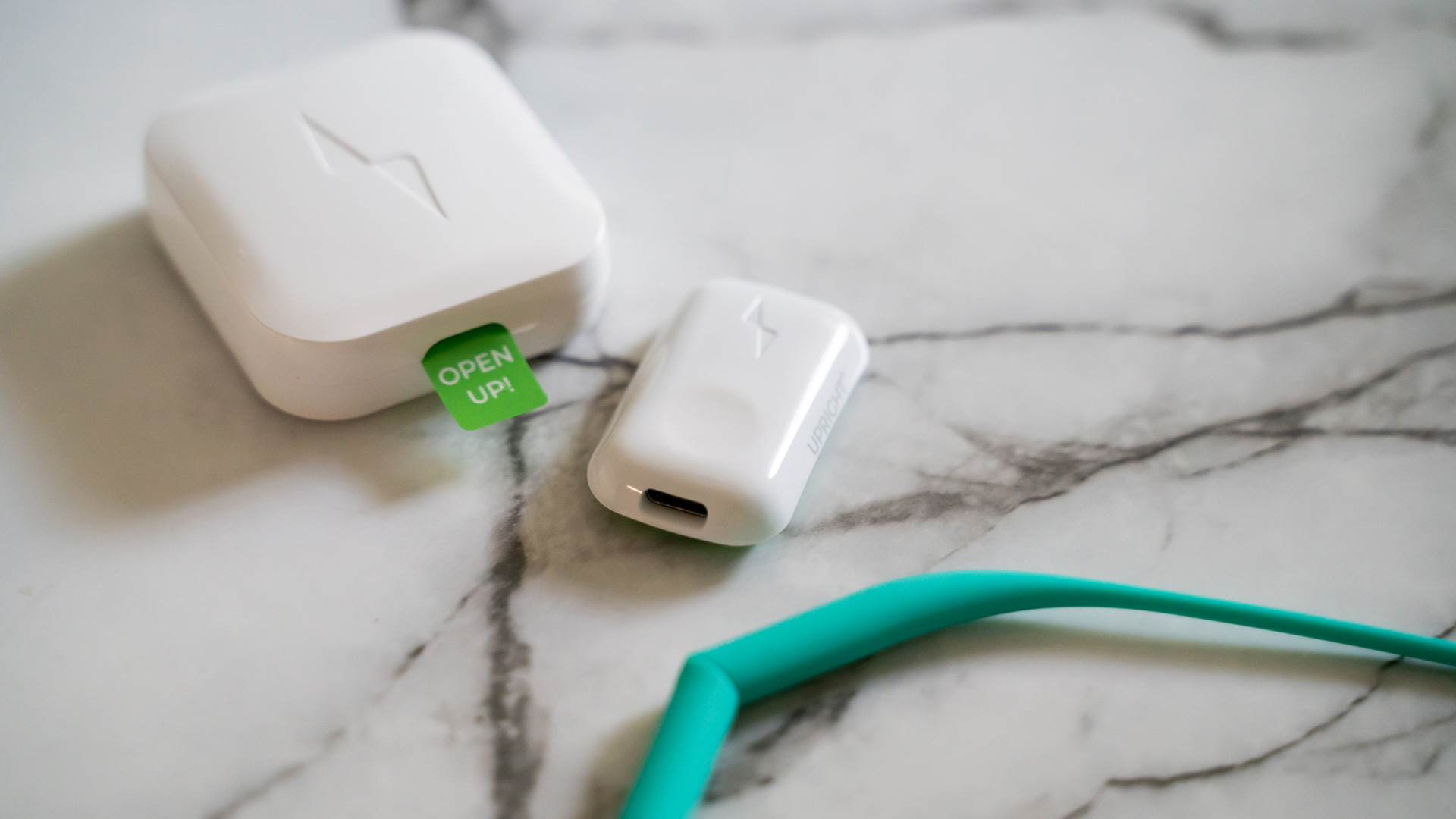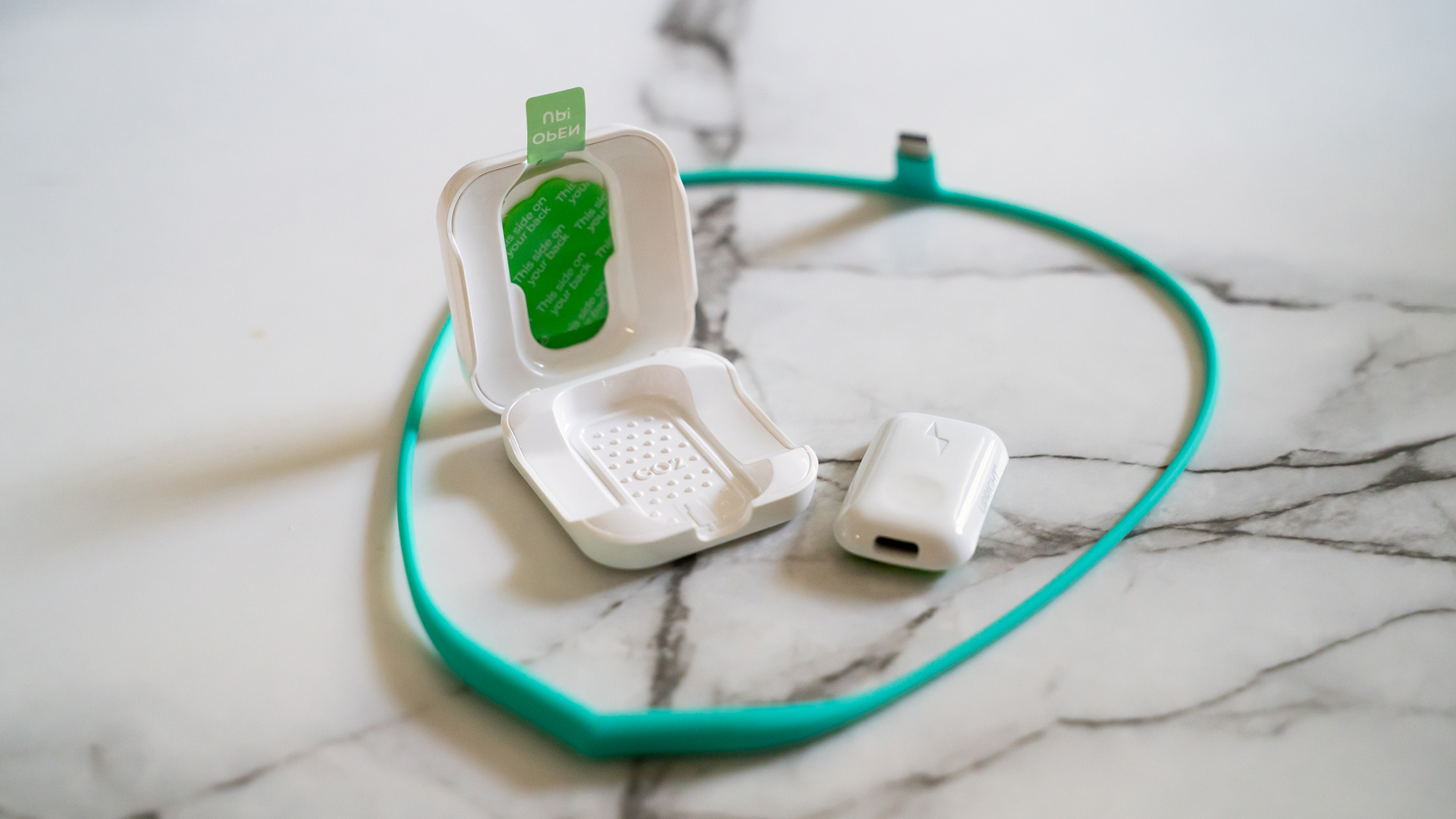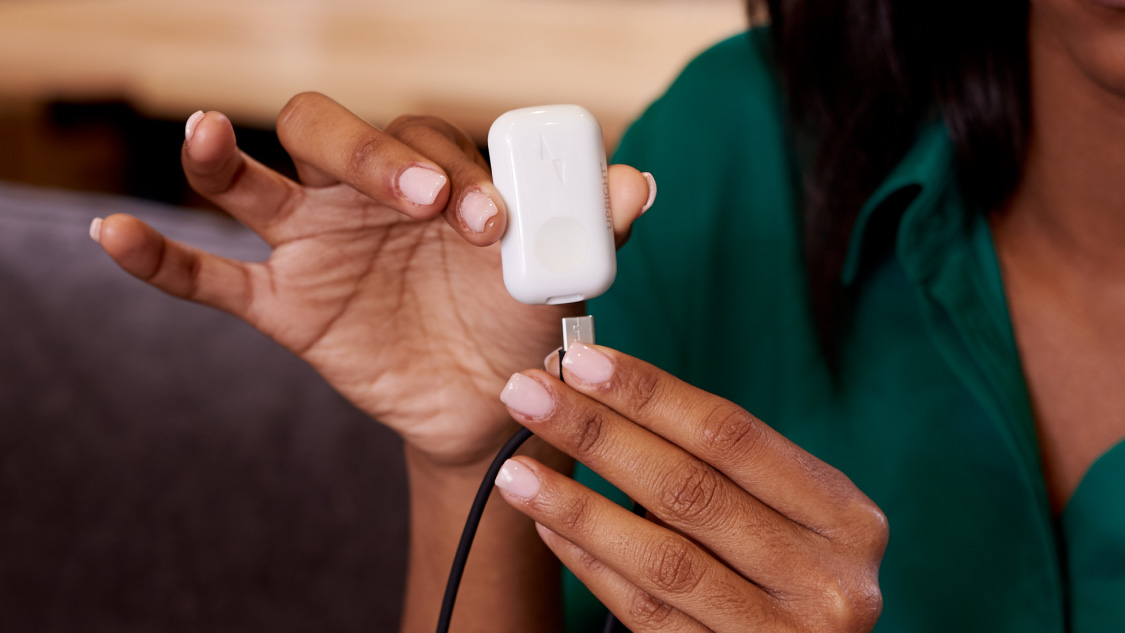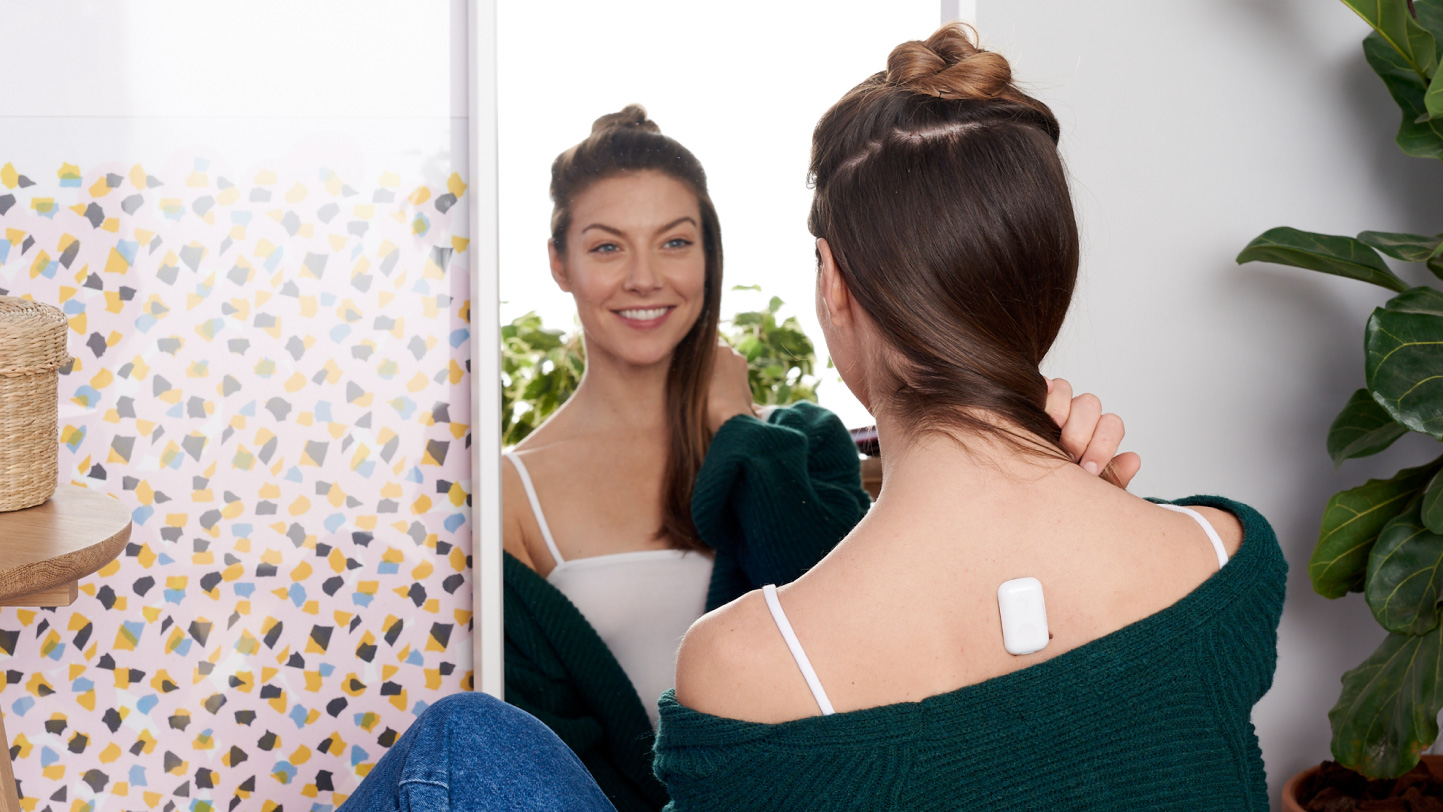Upright Go 2 review: a guide to better posture... but you'll need to do the hard work yourself
The Upright Go 2 sticks on your back and vibrates when you slump. Can it train you towards perfect posture? Here's our review

The Upright Go 2 is an interesting tiny piece of kit. It's got its benefits, and it could help you develop better posture habits in the long run, but only if you let it and only if you do the work. And, it still has quite a way to go before it can be truly worthy of being called a posture trainer.
-
+
Slim, compact and travel-friendly
-
+
Easy to set up
-
+
Great app support
-
+
Good battery life
-
+
Very responsive
-
-
Posture tracking isn't on the money
-
-
Pricey for what it does
-
-
Can easily be cheated
-
-
Not waterproof
Why you can trust T3

Good posture is a habit you develop over time, not something you acquire instantly. That's even more apparent when using the Upright Go 2. Many of today's best posture correctors use a more aggressive approach with their figure 8 brace design that's meant to hold your shoulders back and keep them in place – much like our mothers used to do when we were kids – but that isn't the case here.
The Upright Go 2 takes on a more passive approach, tracking your posture via its movement sensors and subtly reminding you to correct it yourself once it detects that you're out of upright range. It's a good and promising approach, allowing you to have a more active participation in your journey to better and healthier form.
Sadly, the system that the Upright Go 2 uses is also not infallible, as it relies heavily on how it's calibrated and implements directional tracking rather than actual posture tracking. For it to be truly effective, you have to be willing to do all the work yourself.
Upright Go 2 review: price and release date
Released in June 2019, the Upright Go 2 is the successor to the original Upright Go. At MSRP it'll set you back USD $79.95 / GBP £84.99. It feels pretty steep, especially for the functionality it offers. However, that price does come with 10 adhesives, one of which comes pre-attached to the device, five alcohol prep pads, an adhesive removal tool that I didn't find all that necessary, and a compact hard case.
Those adhesives won't last you forever. Luckily, Upright does do 10-pack refills for USD $9.95 / GBP £9.99 (although UK readers should note that, weirdly, Upright doesn't seem to sell the refill packs through its own site – they're available at Amazon though). Either as an alternative or as an additional accessory, there's the Upright Necklace for an additional USD $19.95 / GBP £15.99, and it comes in six colors: black, gray, white, turquoise, pink, and teal blue.
If you want the works, you can get the Go 2 bundle with 30 adhesive strips and the Necklace for $129.75 / £95.95.
Upright Go 2 review: design
The first things you'll notice about the Upright Go 2 are that it's incredibly light and surprisingly small at 1.89 x 1.14 x 0.35 inches – not too small to render it practically invisible to onlookers, but small enough so as not to draw people's attention.
Get all the latest news, reviews, deals and buying guides on gorgeous tech, home and active products from the T3 experts
It's made of quality plastic shell that's smooth and glossy with a USB-C port for charging, an indicator light in one corner, and a depressed rubberized button for powering the device on or off, toggling between two modes and calibration.
To secure it to your back, it comes with 10 adhesive strips that are hypoallergenic and give you up to five uses each. That means that you'll have at most 50 uses of the device before you have to replenish your adhesive stock. These adhesive strips stick to your skin well, even when you start to sweat (just make sure you pat that area of your skin dry before attaching it). Even better, it peels off easy enough so you're not in pain every time you remove it.

The Upright Go 2 comes with a hard square case that's also light and thin so that it easily slips in your jeans, skirt or shirt pocket. This case only has room for the device and an extra adhesive strip, and won't be able to accommodate the included USB-C cable for charging. The good news is that the case does have an opening that gives direct access to the Go 2's charging port so you won't have to take the device out for charging.
The high-grade silicone Upright Necklace is an additional purchase, but still worth mentioning here as you'll likely have times when you won't want to use the adhesive.

It's a good alternative and does a nice job of keeping the device in place thanks to its weighted magnetic clasp. It attaches to the device via the USB-C port and is easy to use as well – perhaps even easier than having to reach behind you to stick the device on. However, it's certainly not something you'd want to wear all the time, especially as it seems to clash with most outfits.
Sadly, the Upright Go 2 isn't waterproof so it's not recommended to be worn during downpours, at waterparks, or when you know you'll be dripping in sweat.
Upright Go 2 review: features
There aren't a lot of features here. The Upright Go 2 does what it's supposed to do, and that's that. However, it is worth going through those basic ones that make it tick.
It comes with two movement sensors and advanced movement detection to track your posture, though how exactly they do so, Upright doesn't say. It also has up to 35 hours of battery life on a single charge. That's pretty decent, giving you around four days of use if you were to use it whilst doing work at your desk. And, it only takes 3 hours of charging, so if you forget to charge it at night, you can give it a bit of juice while getting ready in the morning.

While it works without the app, the Upright Go 2 does have app support, which allows you to personalize the device as well as track your progress and stats.
The Upright app shows you your minutes of being 'upright', battery level, and real-time posture with the posture indicator in the homepage. This homepage also comes with the calibration button, a switch to toggle between Training Mode (which vibrates when you're out of upright range) and Tracking Mode, and access to the menu for setting the vibration delay.
Other tabs will display your daily stats so you can keep track of your progress, tips and exercises for improving your posture, and general device settings like its vibration pattern and strength as well as upright range that you can set to strict or relax and anywhere in between.
Upright Go 2 review: performance
Perhaps the best thing about the Upright Go 2 is that it's very easy to use, has a simple setup, and makes everything incredibly accessible. The path to good posture isn't going to be easy, especially if you're like me who's had the tendency to hunch over and carry the weight on her shoulders her entire life. However, the Go's effortless user interface does set you off to a great start.
In fact, the hardest part about it is when you're reaching back to stick it on your upper back between the upper section of your shoulder blades, and making sure it's as straight as possible. Although that too gets easier with time.
The Upright Go 2 is a nifty way to remind you to sit upright. However, if you're hoping for something that will actively improve your posture while you take on a more passive role in your progress, you might be sorely disappointed.

This isn't a device that will correct your posture and keep it in place for you. It won't pull your shoulders back and down for you, nor will it push your back forward to keep it from slouching. Instead, what it does is keep track of your general posture and gently reminds you when you're not sitting or standing the right way.
The way it tracks your posture is not completely without fault, either. Via the app, Upright does tell you how to properly calibrate it – your feet flat on the ground, your legs at a 90-degree angle, your back straight but not over-extended, and your shoulders back and relaxed. However, you are also in full control of that calibration. In fact, I've tried calibrating it while slouched on the couch and while lying down, and the app hasn't noticed the difference.
I’ve noticed that its movement sensors track your body’s leaning forward and leaning back motions more than anything. It won’t know whether your shoulders are set properly back or your back is straight and not hunched over. So, it doesn’t matter how correctly you calibrate it – it won’t be able to tell whether you’re sitting straight or slouched in your computer chair or couch, only whether or not you’re within your set upright range.

The temptation to cheat is definitely strong with this one. That isn't to say that it doesn't work. If you spend a lot of time at your desk or on your feet, it's definitely a useful device to help remind you to keep upright. Its vibration acts like negative reinforcement, stopping only when you've repositioned yourself within the upright range.
Admittedly, I was apprehensive of it at first. I've found it to be a bit of an inconvenience as well, especially when I'm focused on my work and don't want to have to worry about my posture. However, I can honestly say that that negative reinforcement works. I've only tested this device for three weeks, and I'm already finding myself unconsciously sitting upright just to avoid feeling that annoying vibration on my back. And, I've done so even when I'm not wearing the device.
Still, it'll also only take you so far. For it to work, you'll need to be fully committed and to have the right discipline to develop better posture habits. Without your commitment and discipline, the Upright Go 2 sadly won't work.
Upright Go 2 review: verdict
The Upright Go 2 is a nifty device that will help guide you to having a better posture. It makes the journey less daunting and more accessible as well by being easy to set up and use. And, because of its tiny and unimposing form factor, you can use it pretty much anywhere – at work, at your dinner date with friends, while shopping for new clothes.
However, if you're looking for a proper posture trainer that will put your back and shoulders in their ideal positions, and keep them in such positions, this isn't the device for you. It serves more as your mini assistant-cum-mini trainer of sorts, reminding you of the task at hand but not actually doing it for you. As such, it requires your active participation to achieve your goals.
The good news is, over time, you should develop those good posture habits. The device's negative reinforcement technique does work, especially when set up properly. In a matter of weeks, you'll find yourself, as I have, having better posture even without the device on you. You just have to give it some time, do the work, and commit.
Upright Go 2 review: also consider
If you're looking for a posture corrector that will hold your shoulders and back in place for you, a posture back brace might be more ideal for you. There are a number of them on Amazon, including the ComfyBrace Posture Corrector and the FlexGuard Posture Corrector.
For the best of both worlds, the PosturePerfect Smart Posture Corrector is both a posture tracker that delivers vibrations when detecting poor posture and a brace that helps position your shoulders in place.

Michelle Rae Uy is a tech and travel journalist, editor and photographer with a bad case of wanderlust. She is a regular contributor for IGN, TechRadar and Business Insider, and has contributed to Thrillist, Paste Magazine, Nylon, Fodor's and Steve's Digicams. Living mainly in California with her adorable cats, she splits her time between Los Angeles, London and the rest of the world.